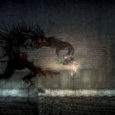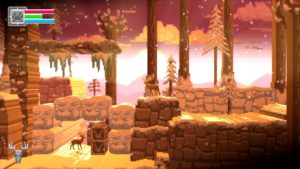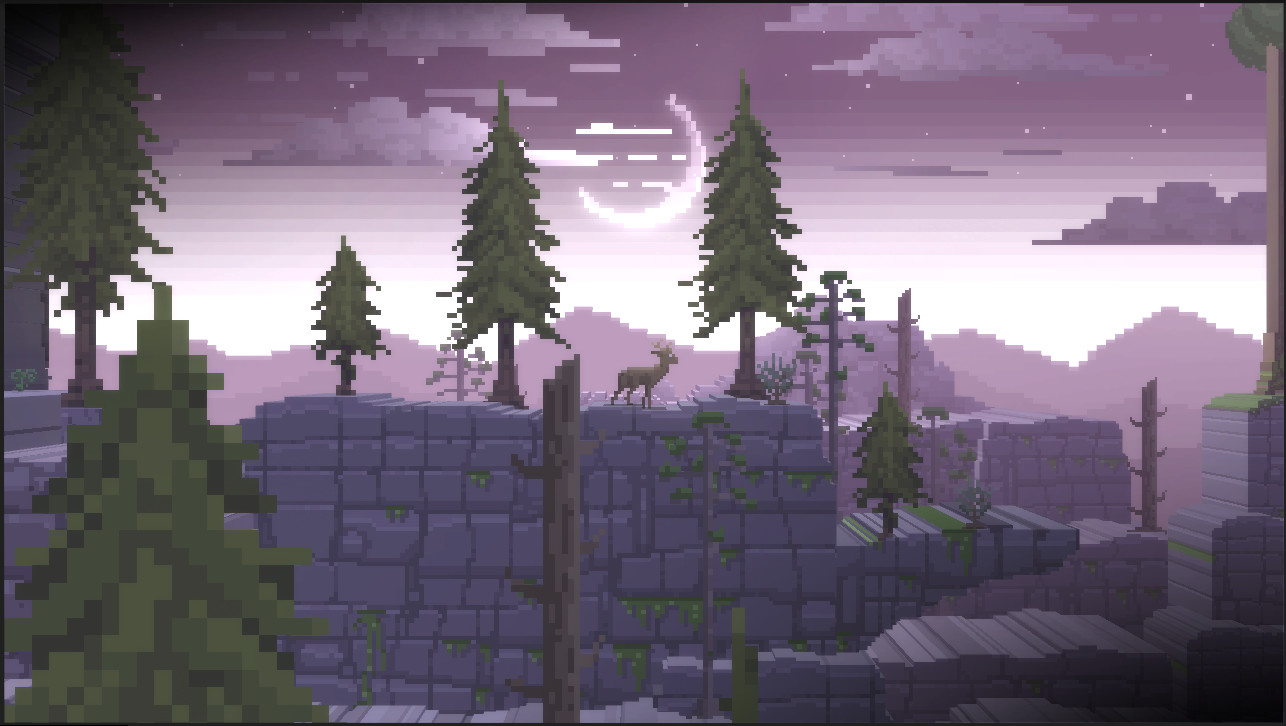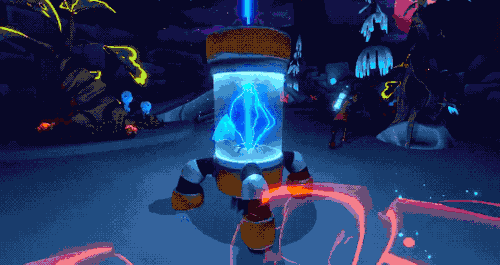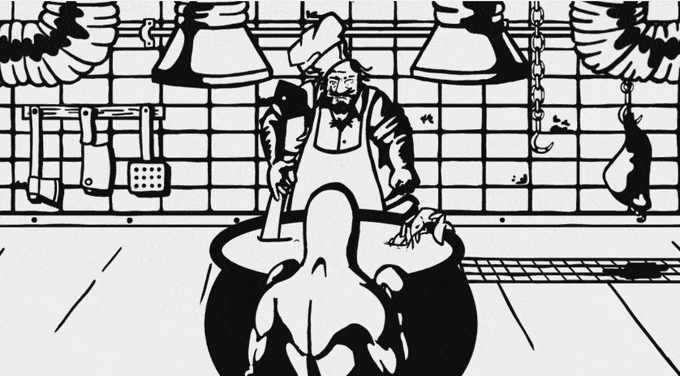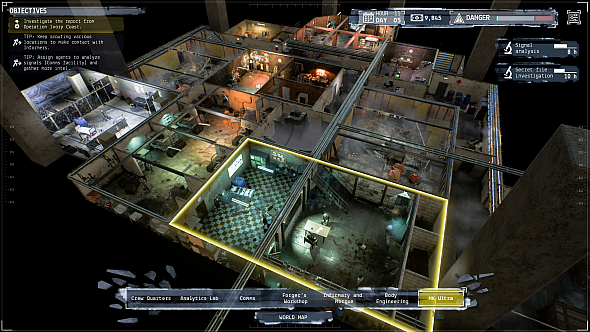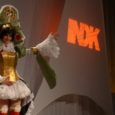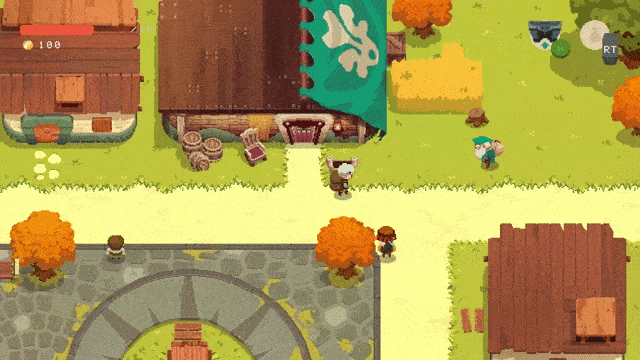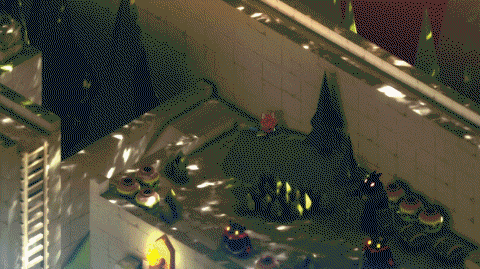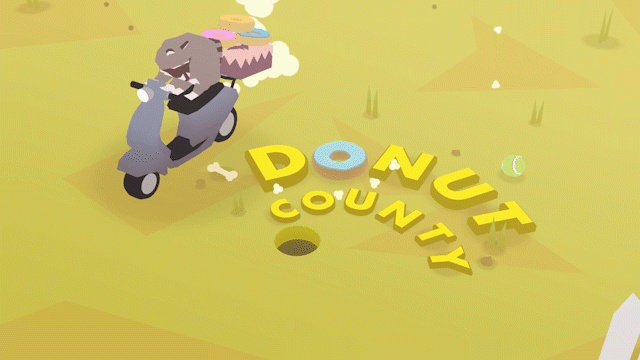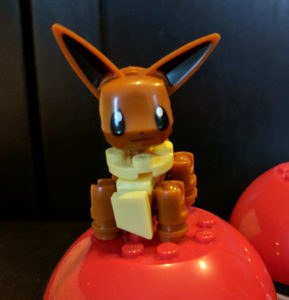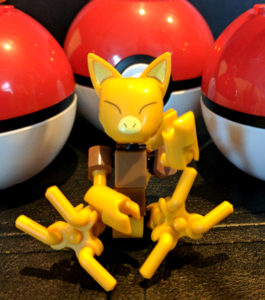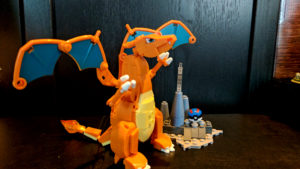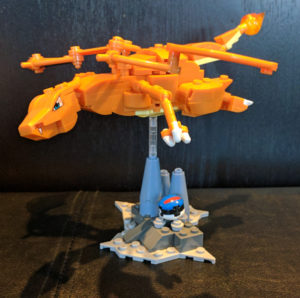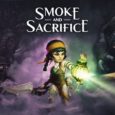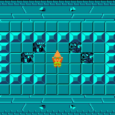Don’t be fooled by the whimsically beautiful, hand-drawn aesthetic Smoke and Sacrifice. Set underground and spanning multiple biomes, Smoke and Sacrifice is a wonderfully crafted survival adventure with an engaging story and an infuriatingly steep learning curve. This game goes from cutesy and innocuous to immediate psychic scarring in the span of its own intro scene. How is that even possible? Might have something to do with the player taking an active role in sacrificing the main character Sachi’s first born child upon an altar surrounded by sun-worshiping religious acolytes. Maybe.
The only reason I decided to play this game, out of a choice of several others, was purely visual. So, being the habitual lazy mug I am, instead of doing research along the lines of watching the entire YouTube video, reading about Solar Sail Games, or, you know, doing literally anything at all before just jumping into this, I… just jumped into this.
And once you jump in, the real nightmare begins. Flash forward seven years; the lights go out, the smoke pours in, and the monsters come into the village. Taking control of Sachi, the player will use the ensuing chaos, wrapped in a thick blanket of panic, to check out the temple and alter where Sachi gave up her child, only to be teleported to a hellish landscape of terror and smoke shrouded danger.
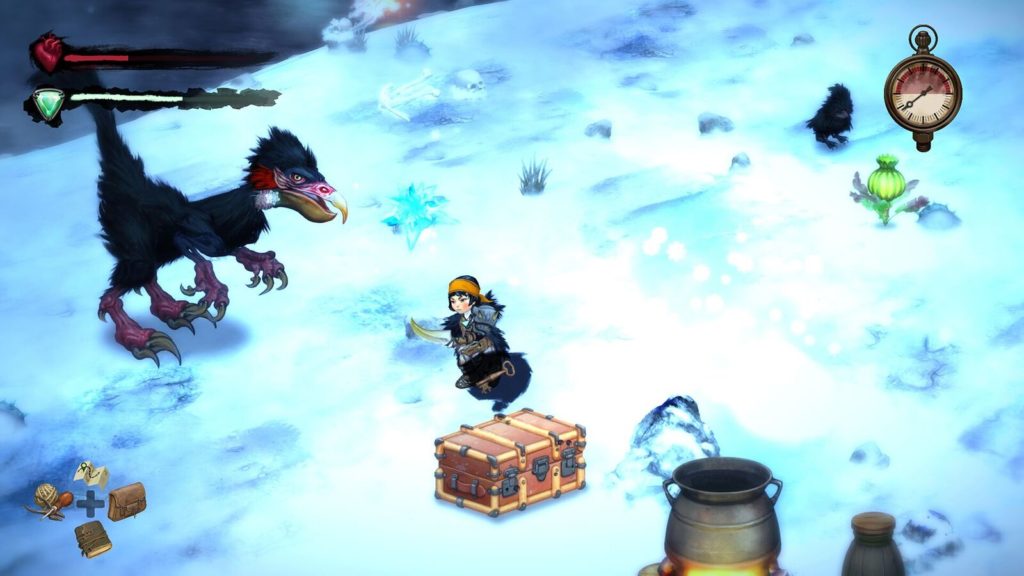
Look, I’ll be the first to admit that I’m not the brightest lighthouse on the coast, and I generally like my games fast and simple. But, had I taken the time from the outset to pay attention to the background environment, I probably wouldn’t have died 20 something times before making any significant progress in my first play-through.
Without the player ever being involved, the ecosystem of this world carries on with it’s bad self. Polyps (little jellyfish enemies) mate and produce offspring, plants swallow glowbugs and emit protective light, anglermoles eat fireflies and belch flames at you. Why does any of this matter?
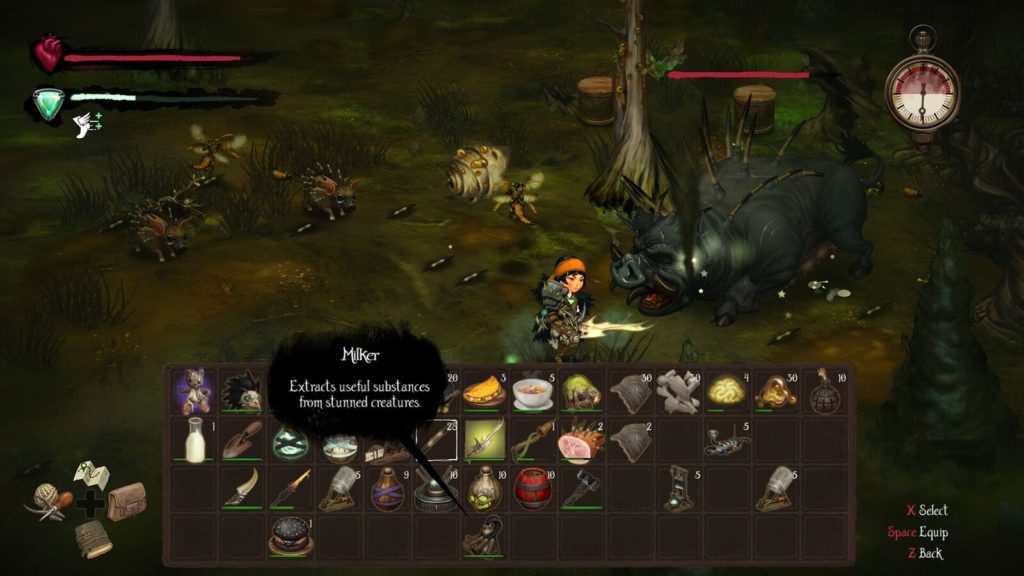
Actual transcript of this fight: F***. This game is hard… No wait, I got it… Nevermind, I’m dead again.
See that monstrosity in the picture up there? That was the first big enemy I was tasked to kill. And how many times did he annihilate me instead? An embarrassing amount. It wasn’t until I accidentally brought him too close to that wasp nest that the coin finally dropped. The wasps killed the boar, I killed the wasps, and I then applied that lesson to every other big-bad in the game. Paying attention to the environmental interactions are the key from taking Smoke and Sacrifice from impossibly frustrating to an enjoyable experience.
Even the sound design is amazing. Flapping insect wings, gnashing teeth, screen rumbling explosions, and prosaic music all contribute to a perfect symphony to accompany you on your quest.
Of course, no game is without its flaws. However, in this particular case, for Smoke and Sacrifice they are few and far between. Sometimes items you try to pick up are inaccessible because of the placement of permanent objects and how items drop. Also there’s… um… well, actually, that’s about the only bug I found. Other than the wasps.
Fans of diesel-punk, the crafting elements of Ark, and games like Penny Arcade’s On the Rain Slick Precipice of Darkness should definitely give this one a go. From perfect visuals and incredible audio, not a tedious amount of grinding, Smoke and Shadow is a visually perfect game with incredible audio and a plot that gave me actual nightmares. I cannot wait to play more.
PS: SAVE.
PPS: SAVE OFTEN.
Editor’s Note: This review was written in conjunction with Jon Calise, a contributor to Sub Cultured. You can find more of his writing on his personal blog, Petting Zoo Rejects.
In an industry that is filled with space marines, bald military types, and professional killers, stepping into the world of Deer God, by Crescent Moon Games, was incredibly refreshing.
Deer God starts off laying down the story hard as an omnipotent Deer God requires the player, a young fawn, to right the wrongs of the crimes against nature. But you are no ordinary fawn. Through some sort of soul transference, the player is actually a hunter who died in a accident while shooting an awe-inspiring stag and is reborn as a fawn. And only when you have gathered enough karma will the Deer God return you to your human body.
The gameplay will remind you of endless runners like Canablat, or other roguelikes where environments are procedural generated. However, the first thing you are likely to notice is the pixel art style graphics. The art style is very pleasing, with good use of color and beautiful detail in everything you come across in the environment. The foreground showcases some great lightning techniques and particle effects, and there is a nice collection of critters to encounter, help, fight, and defeat.
Galloping around as a four legged fawn feels different then controlling a humanoid runner. The game will have you monitoring a hunger meter as well as health bar. Food is dropped all around the stage for you to keep that bar full, but lurking predators, hunters, and other animals will seek to deplete your health bar. They are pretty standard mechanics and function as they should.
There are other abilities to acquire, most of which you will get from solving basic environmental puzzles, or just found about in the world. What starts as a game with just a single button tackle, ends up being a mad dash of accumulating powers such as fireballs, planting bouncy mushrooms, and lightning bolts.
As you keep your furry avatar alive, the fawn will begin to grow into an adult, increasing its speed and strength. This is where the roguelike features come in, because once you die, you will lose the growth of your deer when you respawn. In the Normal difficulty mode, you will find yourself respawning as a newborn fawn at checkpoints, whereas in the Hardcore mode all you will find is perma-death. In true roguelike fashion.
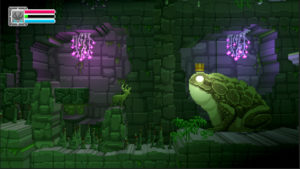 Deer God does have boss battles as well to use your newfound powers on. Most of these bosses seem to be found randomly in the world, so you may not run into the same ones at the same times through different play throughs. Fighting the bosses showcases some of the more tactical moments in the game, whereas fighting regular enemies felt shallow.
Deer God does have boss battles as well to use your newfound powers on. Most of these bosses seem to be found randomly in the world, so you may not run into the same ones at the same times through different play throughs. Fighting the bosses showcases some of the more tactical moments in the game, whereas fighting regular enemies felt shallow.
The biggest enemy of Deer God is repetition. Sure, this genre calls for a certain amount of it, but after a few bosses, a few puzzles, and a few deaths, I found that the fun had diminishing returns. The procedural generated moments could cause some confusion or stress as well. If you have certain goals or ideas in mind, the progress may become hindered due to the procedural environment not quite working with you or giving you what you need.
As you defeat enemies, your karma bar will increase. The goal of Deer God is to get that bar completely full. You have to be careful of what you are doing as you can accumulate bad karma as well. Bad karma has many functions from unlocking different abilities, to punishing you for killing innocent animals. Acts such as furry genocide may have you returning to the world as a rabbit or another small animal that you will find useless in combat. You will need to do something special in game to revert yourself back into a fawn, so all is not lost.
There is a multiplayer mode in Deer God as well, where two players can work together to solves puzzles. The idea is to just survive as long as possible. There are no quests, and if one of you dies, the other one has to mate with another deer to create a fawn. If both player’s deer die, the game comes to an end. It was fun enough for a short while, but with nothing guiding you or no real goals, I found multiplayer to be a one and done experience. The woes of repetition unfortunately follow into this mode as well.
Deer God is a pretty and inoffensive runner, but it also feels a lot like many mobile games I have played. If you need a calming title to play on the Nintendo Switch, Deer God‘s identity shines through with its focus on nature and playing as a fawn.
Sub Cultured stopped by PAX South 2018 to check out all the delightful titles this convention had to offer!
Aftercharge
Aftercharge is a 3v3 asymmetrical FPS game. 3 players play as a group of robots trying to destroy a number of energy extractors on the map. They’re completely invisible unless they’ve just been damaged or are directly in front of an enemy. They have the ability to resurrect their allies and also a number of abilities to help them sneak around the map. The enemy team is invincible and has abilities to either impede the invisible enemies or buff themselves. The resulting combat are a stressful mix of sneaking/seeking and frantically trying to kill/run away before invisibility comes back. It’s a great deal of fun, especially playing with friends.
You can look for Aftercharge coming to Windows, Mac, and Linux in Spring of 2018.
Pato Box
Pato Box sees you take control of a duck boxer doing what he does best — box. Even in situation in which it may not be applicable like opening doors, this guy’s a punching machine. He was betrayed on his way to the top of his boxing career and is ready to punch his way to the truth. The art style is stark black and white, which is a visual treat and so much fun to watch. The combat responds as well as you’d expect of something that looks like a Sin City Punch Out. It’s a unique experience and definitely one worth checking out.
Pato Box will be out this Spring for PC, Mac, Switch, and PS Vita.
Phantom Doctrine
If Donut County was the simplest game at PAX South 2018, Phantom Doctrine is definitely the most complicated, and not in a bad way. If you’ve ever played XCom and wanted it to be deeper on basically every level, this is exactly the game you’ve been looking for. Set during the Cold War, you lead an organization called The Cabal dedicated to fighting global conspiracy. The game takes major events from history that are all true, but where most of the game occurs is in “what if this happened”-type scenarios. Like in XCom, there are missions to go on that you can play through, and a home base to manage. As the base, you can look through evidence you’ve collected to try and piece together your enemies’ plans, recruit new operatives, brainwash captives, acquire more funds, and take the heat off your agents. While in the field, you can choose to operate with stealth or being aggressive, gather intel or rush to the objective. The game is really flexible to how you want to play it and how you want to spend your time. If you want to spend 20 hours in the base making sure everything’s perfect for the next mission, you can. If you want to speed run through the missions, you totally can. Missions also allow you to have special abilities like spotters, snipers, and grenade launchers, which come in handy when in a sticky situation.
If you’re ready to sink your teeth in to the deepest tactical game in quite some time, get hype for Phantom Doctrine coming in 2018 to at least PC.
Check out more of our coverage from PAX South 2018!
Party Hard 2, Due Process, The Swords of Ditto
Moonlighter, Tunic, Donut County
Sub Cultured stopped by PAX South 2018 to check out all the delightful titles this convention had to offer!
Moonlighter
Moonlighter is like if Recettear and a Roguelike had a baby. You play as a shopkeeper outside of an ever-changing dungeon. Your task is to sell goods to people. When you do, you earn money so you can get better equipment and craft better items to either sell or use yourself to go in to the dungeon. Clearing the dungeon will yield new items, which you can craft and sell in your shop, et cetera. It’s a big ol’ capitalism loop. The dungeon is different every time you enter, which makes it that much more fun. There’s 5 different entrances to the dungeon and characters to interact with so there’s presumably an end, but with the varying dungeons, bevy of characters to please, and loot to grab, you may not ever want to see it.
Moonlighter will be coming out in 2018 for Xbox One, PS4, PC, Switch, and Mac/Linux.
Tunic
Tunic has so much style that it hurts. Zelda is the easiest comparison — you’re a lone adventurer (in this case a lil’ fox) in a mysterious world who collects items that open up new paths. If Hat In Time is a cute-as-heck platformer, this is a cute-as-heck action/adventure game. The controls are tight and responsive and the combat feels fluid and satisfying. An extra layer of polish/intrigue to this game is the concept that it’s a game you’re just discovering that was made in a foreign country, so you’ll see parts of the manual in the game and all the text is in a made up language you don’t understand. Even the website has this language peppered about.
This game is one of the ones we were most excited by at PAX South, so be on the lookout for it coming out later this year to PC, Mac, Linux, and consoles in 2018.
Donut County
Once upon a time, @PeterMolydeux had a joke game description in which you play as a hole in the ground. From that, Ben Esposito created one of the most simple, but compelling games at PAX South, Donut County. The mechanics are simple — you play as a hole in the ground swallowing things up. The more you eat, the bigger your hole gets, which allows you to eat bigger things. Think reverse Katamari. Between levels, you’ll also get a glimpse into the lives of the citizens of Donut County which has been upended by this dumb hole. The art style is simple and effective, the humor isn’t overdone, and the gameplay, though simple, is satisfying.
Donut County is coming to PC, Mac, and iOS in 2018
Check out more of our coverage from PAX South 2018!
Aftercharge, Pato Box, Phantom Doctrine
Party Hard 2, Due Process, The Swords of Ditto
The other day I stopped into my local GameStop to see if they had any of the San Diego Comic Con exclusive Funko Pop!s available. What I discovered when I walked in, however, was much more exciting. Recently, Mega Construx released a line of Pokémon-themed building block sets. Being the Pokémon fan that I am I was at first embarrassed that this line had completely flown under my radar when it was announced back in February, but at least stumbling on them the way I did was validating.
There were about twelve sets in total, roughly six larger boxed sets and six little minifigs sort of that come in a Pokéball. I bought a little Eevee Pokéball on the spot. I figured I’d get one of the small ones to dip my toe in a bit, see how I like them. When I got home, it took me about ten minutes to put together (which really only took that long because I kept dropping all the pieces.) Once the figure was complete, I was hooked. At first it looked a little janky with the thick little legs and awkward tuft of fur on its chest but eventually all that became part of its charm.
A couple of days later I went back to the store and pored over which of the larger sets to buy. What I like most about the line is there are a few different themes; besides the smaller figures, a couple of the larger Pokémon are represented, like Charizard and Gyarados. The line also includes the starter mid-evolutions, Charmeleon, Wartortle and Ivysaur as their own stand-alone sets. Each of the starters, Charmander, Squirtle and Bulbasaur, along with Pikachu are paired off for battle scene building sets.
After much, much deliberation, I decided to go with Charizard. I also picked up Abra and Magikarp, a couple of my favorites, from the line of smaller sets so I can display next to little Eevee.
Again, the little ones were quick to assemble; total time for both of those was about fifteen minutes. Charizard, on the other hand, took roughly an hour to build. The build instructions were slightly confusing as the way they’re drawn isn’t as clear as what you’d get from a LEGO manual. I managed, though, and I’m really proud of myself.
I’m also really proud of this Charizard, which turned out to be a nice display piece. A lot of the articulation is really good, especially around the head, legs and tail. I would have liked if there was a bit more articulation, like maybe if the arms moved a little better and get some moveable fingers and jaw in there but I also realize that those features would impact the price, which may turn off a few potential fans.
As far as quality, it’s easy to tell why LEGO is the cream of the crop. That’s not to say Mega Construx are bad; in fact, they’re intricately designed and really capture the likenesses of the Pokémon they’re meant to replicate. However, the building aspect of the set was difficult at times. I found myself struggling to click blocks in place, having to rely on using my teeth to get the amount of pressure that I needed. This could have been due to some microscopic defect in the stud that made it just too big to fit. In fairness, though, it could have just been small parts and sweaty hands (it was a really hot day, you guys.)
If you do manage to get them clicked into place and realize you put the piece in the wrong spot, good luck getting it apart. Unlike LEGO, Construx don’t come with a handy separating tool so, once again, I lucked out that I had a mouthful of teeth to do the job. In fairness, though, I don’t fault Construx for this. It took LEGO years to realize a tool like this was a necessity and since they likely have a patent on it, Construx will need to design their own.
As I mentioned earlier, in addition to the larger sets, the series offers a few single figures, such as Pokémon’s mascot, Pikachu, and a few other fan favorites, like Eevee, Magikarp, and…Zubat. What I like most about these are the packaging; they all come in a plastic Pokéball that can be used as a display base once building is complete. And at around $7 each, they’re a pretty good deal. Considering LEGO minifigure blind bags can retail for right around $5 and only have about 5 pieces each and a substandard display, these Pokémon characters are basically a steal.
Even the larger sets are a good value. At this time, the biggest set was Gyarados, with a total of 352 pieces retailing for $30. Compared to some of LEGO’s franchised sets, that’s an amazing deal. The LEGO Batman Movie Riddler Riddle Racer playset has 254 pieces and is regularly priced at $35 (though was on sale for $24 at the time of this writing, for whatever that’s worth).

Then again, you get what you pay for. With LEGO being the Cadillac of building blocks, the Pokémon Mega Construx don’t size up to quite that level. Sure, the models are well done and really capture the likenesses of the Pokémon, but the builds aren’t as sophisticated as what one would expect from LEGO.
It was a great choice for Mega Construx to jump into the Pokémon arena, especially given the mainstream popularity of Pokémon GO. Building sets like these now appeal to a wider audience since they are familiar with the characters. Even though they aren’t perfect, they are fantastically modelled and offer great playability.
Bottom line: I want more. Not just “I want to buy more sets,” which is definitely true. The low price point and great showcaseability really make these sets a good value despite their shortcomings. When I say I want “more,” I mean more sets. I want this line to do well so that Mega releases additional sets, like maybe the Generation 1 legendaries, Articuno, Zapdos, Moltres, and Mewtwo. Even a tiny little Mew hovering over a Pokéball would be sweet.
Also, I want to see some from the later generations of games: Tyranitar, Hoot Hoot, Lucario. There are so many great Pokémon that would make amazing display pieces that this could go on forever…just like the games!
** NOTE: During the time of writing the SNES Classic had yet to be announced, and as such Nenedamus was still awesome and ahead of the game **
Nostalgia is wasted on the young. So many things in gaming these days are sequels, or updates, or HD special editions, or whatever the hell most companies feel like repackaging to sell to the old folks like me. And thankfully for something refreshing from that formula, the NES Classic was released – a mini console that thanks to today’s technology was able to pack 30 classic games from Nintendo’s 8-bit era into one convenient unit. It opened for $59.99 and it sounded pretty good at the time. Classic Nintendo IP like the Mario and Zelda series along with Metroid were now plug and play, with many other popular titles rounding out the 30.
And those positive vibes lasted for roughly 38 seconds.
 There was absolutely no way in the infinite 8-bit hells that this price was going to remain steady. Just like all other re-issued nostalgia it was going to be bought in bulk, stocked out, and sold to gouge the highest bidders for profit. I saw the device go as high as $600 on eBay (a 1000% price hike for those playing along at home) and people jumping at the opportunity to have one. 1.5 million units were sold in just a couple months on the market. Which turned out to be… well, all of them.
There was absolutely no way in the infinite 8-bit hells that this price was going to remain steady. Just like all other re-issued nostalgia it was going to be bought in bulk, stocked out, and sold to gouge the highest bidders for profit. I saw the device go as high as $600 on eBay (a 1000% price hike for those playing along at home) and people jumping at the opportunity to have one. 1.5 million units were sold in just a couple months on the market. Which turned out to be… well, all of them.
So now we come to the recent development in the NES Classic saga. Recently Nintendo, without any warning or heads up, stopped production on the mini console a couple weeks ago. They have since announced that they would cease production in not only the North American region but in Japan and Europe as well. What happened next, though, surprised the hell out of Old Man Nene though for such a simple thing – the gaming community, at least what I’ve seen on social media, lost its damn mind. But it didn’t make any sense to me. Most kid gamers my age still have our NES and games intact. Younger gamers have online emulators and ROMS. Why was this such a big thing in the gaming community that I simply couldn’t bring myself to care about? What was the draw? Well kids, to all you Aging Gamer faithful that listen to Old Man Nene in his rocking chair tell you how it used to be – I can only offer the immortal words of DJ Khaled:
Congratulations. You played yourself.
 It’s basic economics and mindshare. Firstly, Nintendo never meant for this to be an ongoing product – why would they when the Switch was just around the corner? This was always going to be special edition and never a permanent offering. The number of units manufactured was set to reflect that. Look at any supply and demand scenario – the second the “super rare” tag gets slapped on an item the price spikes like a rocket, and people are willing to pay more for a scarce product. What Nintendo did was create an artificial demand and gamers responded precisely the way they were supposed to.
It’s basic economics and mindshare. Firstly, Nintendo never meant for this to be an ongoing product – why would they when the Switch was just around the corner? This was always going to be special edition and never a permanent offering. The number of units manufactured was set to reflect that. Look at any supply and demand scenario – the second the “super rare” tag gets slapped on an item the price spikes like a rocket, and people are willing to pay more for a scarce product. What Nintendo did was create an artificial demand and gamers responded precisely the way they were supposed to.
It’s like some small restaurants that have lines for blocks leading to their front door. Sure it’ll draw more people and generate more demand, but they don’t tell you that there’s only 10 seats inside and that’s what causing the line.
[Side note: that was an angry morning in Philadelphia for Old Man Nene. I just wanted some pancakes.]
Secondly, they created an environment where gamers would have Nintendo control every free thought in their brains for the foreseeable future. The NES Classic dropped in November 2016. The Switch hit shelves four months later in March 2017. Look at the timing of those events, including the NES Classic price gouge in the middle. This is not a coincidence. It could be argued that hands clamoring for the NES Classic could ultimately lead to a Switch sale. Bummed that the NES Classic is done for? That 8-bit longing, along with murky rumors about a virtual console on the Switch, could be enough mind control to have gamers shelling out fistfuls of cash in the future for games they bought already via the NES Classic. I mean it’s not really that far a stretch… I’m sure there’s a bunch of Square-Enix fans that have 7 different versions and releases of Final Fantasy IV.
In the end, my prediction is this: The NES Classic is dead, but I can see a SNES Classic in the not too distant future.
So go ahead and be mad that you couldn’t get an NES Classic. Celebrate and rejoice if you managed to snag one. But remember this kids – in the end we’re all just logic boards in the gaming machine.
[And while I cannot condone a workaround that theoretically involves easily constructing a Raspberry Pi powered RetroPie DIY unit, legend has it (seriously you guys) would only take an hour to get together, be ultra cheap and allow you to play your old 8 and 16 bit games. I can also neither confirm nor deny such things exists.]


